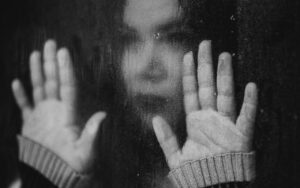Alcoholism affects the entire family. It is estimated that each alcoholic has a profound effect on the lives of at least four people.
Whatever the personality traits of alcoholics, family members usually react to the heavy burden of living with them in a fairly well predictable way. These reactions can become as irresistibly compulsive as the behavior of the alcoholic himself, and as such they threaten to plunge family members into a veritable illness-even more serious than the alcoholic’s disease.
- The family’s unwillingness to acknowledge reality
The family of an alcoholic, on average, does not admit until seven years after there is clear evidence of his pathological addiction that there is an alcoholic in the home. They wait another two years before seeking help.
There is logic in this persistent denial by family members and close friends, however nonsensical it may seem. In the early stages of alcoholism, there are rarely obvious signs to distinguish an alcoholic from a heavy or even moderate drinker. When the first threatening symptoms do appear – increasing alcohol consumption, frequent intoxication, personality changes – those closest to the alcoholic are blinded by the demands of personal loyalty and fear of the social stigma of alcoholism. For each of us, it is much easier to dismiss the question of someone’s disturbing attitude toward alcohol as perfectly normal than to allow the possibility that someone we know and love well has developed a socially unacceptable addiction.
Several important factors contribute to his (the alcoholic’s) family’s distorted perception of reality:
(a) Isolation. It is rare to find a family in which there is talk about the presence of an alcoholic. Shame and embarrassment build a wall of silence around each family member and gradually cut off all but the most superficial bonds between them.
The family members deepen their isolation by withdrawing gradually from friends and outside interests. They learn from bitter experience that they should not invite acquaintances into their homes, and the fear of contingencies created by the alcoholic makes it difficult for them to enter into serious relationships with others. If the children of alcoholics have friends, they are often the children of alcoholics as well.
The alcoholic’s family world gradually narrows to such limits that very few people remain in it except the alcoholic himself and those who revolve directly around him. This creates even more favorable conditions for drinking and makes the family highly dependent on the alcoholic emotionally.
b) Emotional breakdown. Sooner or later the family members of the alcoholic fall into the same emotional discord that he himself suffers. They feel more guilty that the alcoholic is drinking “because of them” and that they hate the people they are convinced they should love and resent them. They feel uncomfortable and ashamed of the alcoholic. They are irritated by their own helplessness. Fear of the drinker’s unpredictable behavior is mixed with uncertain anxiety about the future, and increasing isolation creates feelings of loneliness and depression.
Family members of alcoholics rarely share their experiences with others. Instead, they repress their feelings, which result in a veritable pus of despair and self-loathing. Deprived of a real sense of self, the alcoholic’s family becomes increasingly defenseless against his manipulation.
c) The central position of the alcoholic. In a healthy family, no one is the center all the time. Attention is given to the accomplishments and needs of each family member, and there is a healthy interchange between husband and wife, parents and children.
The alcoholic, on the other hand, usually becomes the main object of attention in the family. Since his behavior is unpredictable and he is the “unknown factor,” all thoughts automatically focus on him. What mood is he in today? If he is sober, what can we do to make him feel good? If he’s drunk, how do we make him feel better? How do we not get in his way? The family is always on guard, trying to predict the unpredictable and hoping to keep a bad situation from getting worse.
As the family is in emotional turmoil and its isolation increases and as the alcoholic is at the center of its energies, family members often take the alcoholic’s view of reality as well. It is not that he drinks too much, but that his wife is grumpy, or his children are noisy, or his parents are unfair, or his boss is a real control freak. Family members involuntarily absorb the alcoholic’s bogus explanations, speculative constructions, and projections and, like the alcoholic himself, may deny his addiction, paying an unusually high price for his drinking. (6, pp. 42-53)
Survival Roles.
Every member of the alcoholic’s family, in one way or another, changes his behavior for his comfort and to save him from the consequences of his drinking.
Primary abettor.
The main abettor is usually the wife or husband, but it can also be a child or another parent, a close friend, or an employer.
In the early years of the addiction, the driving motivation of the main abettor is to love and care for the alcoholic. Often the wife, sensing that the husband really cannot control his drinking, tries to eliminate the temptation itself. She looks for hidden bottles in the house, pours liquor down the drain, dilutes hard liquor with water, and tries to arrange the social life of the drinking husband. She gets angry at buddies who drink and “tempt” the alcoholic and stops accepting invitations to booze parties.
Despite all these efforts, the alcoholic continues to drink. In order to survive and reduce the strain they believe is provoking the husband’s addiction, the chief abettor takes on one by one all the responsibilities that the alcoholic folds.
The well-meaning principal abettor creates an increasingly comfortable environment for the alcoholic to drink. He is fed, groomed. The alcoholic neglects the responsibilities of being an adult, and in return he receives all the comforts of life.
While the alcoholic is protected from the consequences of his addiction, the primary abettor feels more and more insufficient. She cannot control her husband’s drinking and her own emotions. She becomes depressed, moody, painfully sensitive, and irritable. She grumbles and scandalizes, when in fact she wants to be loving and kind. Her own intractable behavior increases her guilt and shame, and her self-esteem drops to zero.
Sooner or later the abettor comes to the collapse of her hopes. Tears, pleas, cries, pleas and prayers – nothing works. It is no longer possible to believe any oaths. In the absence of outside help, the main abettor and the other family members must now either break up with the alcoholic or establish a very dubious life around him.
The family roles of children of alcoholics
These roles include:
(a) Turning into an unusually responsible person;
b) becoming a “comforter.”
c) constantly adjusting or abandoning responsibility;
d) causing trouble.
By accepting one role or combination of roles, a child’s self-protective behavior compensates him for his parents’ inadequacies, covers up gaps in his emotional development, and brings a semblance of stability and order to a chaotic life. As children learn to trust the reliability of their coping strategy, they carry it into adulthood.
The Family Hero.
In almost every broken or dysfunctional family there is a child, often an older child, who takes over for the absent or overwhelmed parent. This responsible, substitute adult child cooks meals, takes care of finances, provides for the welfare of younger siblings, and tries to keep the family functioning as normally as possible. Sometimes this child acts as a counselor, resolving disputes between the parents and trying to mend messed-up relationships.
At school, the family hero is usually an overachiever. He may get better grades, have some responsibilities in class, or be a trained athlete. He works hard to achieve goals and earns the approval of teachers. Often he is a gifted organizer or he enjoys extraordinary authority among his classmates.
Overachievers become adults, the gaps in their emotional development are usually covered by intensive work and self-discipline.
Although outwardly these hard-working men and women appear capable and self-assured, inwardly they suffer from low self-esteem and insecurity.
“Scapegoat.”
Most dysfunctional families have at least one child whose name is hassle. For this child, rules exist only to be broken. He is so consistent in causing trouble that he eventually becomes the family scapegoat, diverting attention away from the alcoholic.
The naughty child has discovered an important principle of child development: negative attention is better than no attention at all. His self-esteem is even lower than that of his positively oriented siblings. He bases his fragile sense of self on the knowledge that he is “bad,” and he gravitates toward friends like him who have low self-esteem.
Because drugs and alcohol are a common focal point of teenage rebellion, the “scapegoat” often experiments with or abuses substances at an early age. A hereditary predisposition can increase the development of addiction even before adolescence ends.
In adulthood, the legacy of the past manifests itself in the form of resistance to guidance, defiant behavior, and at times uncontrollable temper tantrums and rages. Often “scapegoats” are willing to insult, to hurt other people. They often drop out of school, marry early or have an illegitimate child, avoid vocational training and get into debt that cannot be repaid. Despite their desire to be different, they become very much like their parents, whom they hate.
The “Lost Child.”
“Lost children” suffer from a constant sense of inadequacy in comparison to others, of being lost and alone in a world they do not understand, and in fact are even afraid of. They don’t even try to act on their own, choosing instead to “go with the flow. Their low self-esteem, their sense of peace is also visible externally: they are often shy and withdrawn. They prefer to be alone, having learned that dreams are safer and more satisfying than unpredictable relationships with people.
As an adult, the “lost child” continues to feel like a person with no choices or alternatives. He usually gravitates toward people as emotionally detached as himself, or marries a partner who recreates the chaos of his childhood.
The emotional detachment and apathy of the “lost child” is often mistaken for serenity. The adjusting child, unfortunately, accepts as a fact that he can never change anything.
The “family jester” or “family mascot”
These extraordinarily receptive children have the ability to turn even the most painful moments into jokes and are accustomed to neutralizing irritation and anger with a skillfully used sense of humor.
Growing up, family jesters often turn into unstoppable chatterboxes and unusually agitated people. Even in their most painful moments, they cover their deepest feelings with a joke. Only the most persistent and receptive of their friends manage to break through the veil of humor to the wounds behind it.
They may be very talented, but they do not know how to enjoy their successes even with others.
Definition of co-dependency
The word “co-dependence” itself is made up of two parts: addiction – loss of freedom, slavery; co-which means “together.”
Co-dependency has the character of a disease. It is a specific condition characterized by intense preoccupation and preoccupation, as well as extreme dependence (emotional, social, and sometimes physical) on a person or object.
Co-dependency is characterized by:
- delusion, denial, self-deception;
- excessive concern over someone or something while neglecting oneself, up to complete loss of the “I”;
- compulsive actions (unconscious irrational behavior, which a person can regret later, but still continue to act the same way, as if driven by an invisible inner force)
- compulsive need to perform certain actions in relation to other people (patronizing, suppressing, resenting, etc.)
- the habit of experiencing the same feelings (self-pity, anger, irritation, etc.)
- “Frozen” feelings and the problems connected with them in communication, intimate relations, etc;
- inability to distinguish responsibility for oneself and for another (the adult is responsible for himself or herself to others, the co-dependent is responsible for others to others and to himself or herself)
- loss of boundaries; the codependent allows himself or herself to intrude in another’s life the same way as he or she allows others to intrude in theirs, to decide for him or herself “what is good for him or her, what is bad;
- low self-esteem, bordering on self-hatred;
- health problems caused by constant stress.
A co-dependent is a person who has allowed another person’s behavior to affect him or her, and who is completely absorbed in controlling that person’s actions (the other person may be a child, spouse, parent, sibling, client, best friend, he or she may be an alcoholic or drug addict, mentally or physically ill). It is an attempt to gain self-confidence, an awareness of one’s own worth, and an attempt? to define oneself as a person.
Co-dependence is the most common disorder. It leads to disorders on all levels: physical, emotional, behavioral, social and spiritual.




